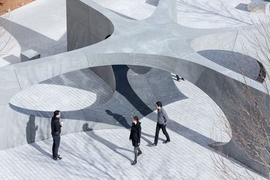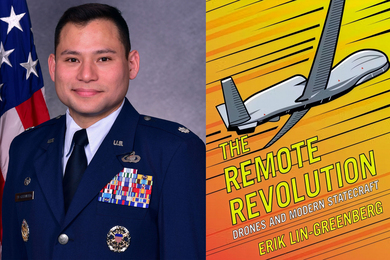MIT Professor John Ochsendorf has been named as the 23rd director of the American Academy in Rome (AAR). Ochsendorf, a professor with dual appointments in the departments of Architecture and Civil and Environmental Engineering, will serve a three-year term beginning July 1, after which he will return to MIT.
Ochsendorf is the Class of 1942 Professor of Architecture and Civil and Environmental Engineering at MIT. A structural engineer with multidisciplinary research interests including the history of construction, masonry mechanics, and sustainable design, Ochsendorf conducts research on the structural safety of historic monuments and the design of more sustainable infrastructure.
In 2008 Ochsendorf was named a MacArthur Fellow for his pioneering work using comparative cultural and historical studies to explore pre-industrial engineering traditions. Beyond his teaching and research, he has been an active presence on the MIT campus, living as a head of house with his family in the Warehouse, a graduate residential community, and serving as the faculty chair of MIT’s 2016 Campus Centennial Celebration.
“We are very proud that John will serve in this important role for scholarship and creative work,” said Hashim Sarkis, dean of the School of Architecture and Planning, and J. Meejin Yoon, professor and head of the Department of Architecture, in a joint announcement to the school. “His unique ability to bring together engineering and the humanities, archeology and architecture, and building technology and history, will serve the American Academy in Rome well, just as it has MIT.”
“John’s work in civil and environmental engineering has strengthened our connections with the Department of Architecture, and resulted in a new vision for education and research opportunities. We are excited that this vision will have the potential for even broader impact in the world as he begins the appointment in Rome,” said Markus Buehler, the McAfee Professor of Engineering and head of the Department of Civil and Environmental Engineering.
Many members of the MIT community have been awarded the AAR’s highly regarded fellowships for a year of scholarly research, creative experimentation, and exchange. Ochsendorf was the recipient of the Rome Prize Fellowship in Historic Preservation, awarded by the AAR in 2007-2008, for a project on the study of masonry vaulting. The last MIT faculty member to serve as director of the organization was professor Henry Millon from 1974 to 1977.
"The academy is one of the most vibrant scholarly and creative communities anywhere in the world. I am extremely grateful for my time there as a fellow, and I am looking forward to giving back to the academy,” said Ochsendorf. “This is an exciting time for AAR, and I am humbled to be entrusted with the stewardship of the next chapter in its distinguished history.”
Founded in 1894, the AAR is a leading international center for independent study and advanced research in the arts and humanities. The organization annually offers the Rome Prize Fellowship and Italian Fellowships to a select group of artists and scholars; the winners, selected by independent juries through a national competition process, are invited to Rome the following year to pursue their work in an atmosphere conducive to intellectual and artistic experimentation and interdisciplinary exchange.
“The breadth of John’s experience makes him an ideal choice,” said Mark Robbins, president of the American Academy in Rome. “His rigorous intellect and administrative abilities will further the support of our Fellows, engaging them fully in the AAR community, the city of Rome, and throughout the Mediterranean basin. He will also be a great partner for the staff and board in reinforcing awareness of AAR’s global impact.”










